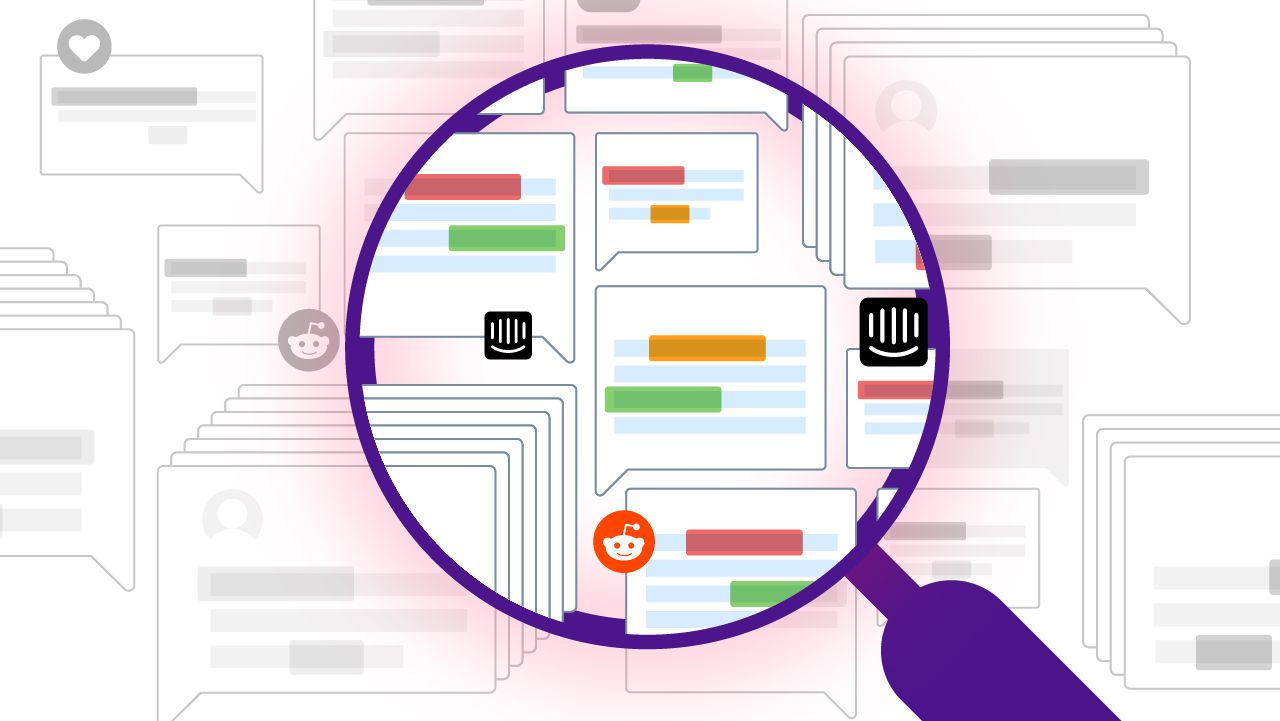
7 proven ways to get C-suite buy-in for your Customer Experience strategy
Are you feeling discouraged by a lack of buy-in from leadership for your customer experience (CX) strategies? Perhaps your objective is a clear CX focus for the leadership at your company, but no-one seems to support your ideas?
You’re not alone. This is a very common scenario in the world of CX professionals globally.
In the world of CX, there’s lots of discussion around corporate buy-in and ownership of CX principles, but what help is that when you feel stuck with having to fight an uphill battle.
When your stakeholders are skeptical about your CX strategy, whilst you are passionate and want to push your ideas ahead, it can be frustrating to realize that getting the buy-in you need might be more of a challenge than first expected.
Here are the best strategies we’ve come across that will support getting buy in from the top down.
1. Start small and grow from there
Many top executives will give lip service to CX, but when it comes down to it, they’ll rely more on their traditional business approaches. It’s what they have always done! They might categorize CX as belonging to the “too hard basket”, especially when sales are down or costs are high.
Everyone knows that CX is a long-term play. So your best strategy is to start small and grow it from there. If you can find just one willing participant who is more inclined to listen to you, this is a good place to start. If you can turn this person’s line of business into a success and reverse their decline, everybody will want to play.
Show a clear link between your efforts and outcomes
Work closely with this stakeholder to make him or her successful through a better approach to CX. Ideally, this will be an area where you’ll be able to show a clear linkage between your efforts and the outcomes you want to achieve.
For example, choose a small part of the process in which your customers buy your product/service. When you manage to improve the CX in that area and sales eventually go up, you can clearly point at how your efforts have increased revenue. This way, you can start building momentum for adding CX initiatives to other, larger parts of the organization.
Progressive success will win you points
Your best bet is aiming for progressive success. First, focus on winning in a small area, then win in a slightly larger area and build your credibility over time until the leadership starts buying in to your efforts.
Remember to let people know about your successes!
Sometimes senior leaders aren’t bought in because they just don’t know enough about what you’ve done. If there is a corporate newsletter you can leverage, ask the authors to write a piece about your success in the latest edition.
2. Talk in language that C-suite understands – and understand them too
Be cognisant of what language you use to describe your CX strategy when talking about why your stakeholders should buy into it.
Everyone is so focused on their own area of ownership – why should they care? I’m guessing most of your peers see customer experience as your problem, not theirs. This is the usual scenario when trying to get buy in for a CX program.
Your job as the CX leader is inherently challenging because for CX to work literally everyone in the organization needs to take ownership.
You want to focus on treating your stakeholders like customers where your ‘product’ (CX) that they buy into is understanding the benefits that making the right changes can bring.
Understand first, then influence
You need to understand each stakeholder individually, learn what their motivations, issues and challenges are, and map their organisational journey and so on. Doing this will leave you with a clearer view on how what you do can help them look good and be better at their job – this is what you need to communicate to them!
Spend some time with your stakeholders one on one and read some of their presentations, to get to grips with their language. You can pick out words that they use, understand their KPIs, and importantly what their passions are.
For example, in IT, their language tends to be about system and data integrity, accessibility, security, uptime, redundancy, and compatibility. Here’s an insightful blog from Lynn Hunsaker, the CX expert, on just that. Also, see point 4 further down, about talking in the language of money, which is closely related to this point.
So you see, an important part of getting buy in is understanding them, the people you are trying to get buy-in from, (this is the key to “How to Win Friends and Influence People”, the famous book by Dale Carnegie).
CX is the “eat healthy and exercise” of the business world
When you talk about CX everyone agrees it’s important but, when push comes to shove, they act in their old ways. Why? Because what we know/say and what we actually do are often two different things.
Create opportunities to nudge people, little by little, toward the right behaviors. What is the CX equivalent to leaving the fruit bowl out whilst you put the Oreos in the highest cabinet?
Crucially, you also need to understand just how CX influences key business metrics. If you evangelize CX too much (like it’s the answer to all the evils in the world ) you run the risk of not looking authentic and data-driven.
Your stakeholders have their belief, you have yours. Let the data speak for itself.
3. Create a customer lifecycle map that includes everyone
Customer journey mapping is a great way to identify broken-down processes and barriers in the buying cycle. By creating a simple customer journey map for your business, you can then use it to show how everybody impacts the customer.
To start, pick 6-8 of the major steps a customer goes through in their dealings with your company. It may be tempting to create an extensive customer journey map here, but for this purpose (getting buy-in internally) it can be more beneficial to keep to the major steps so as not to overwhelm your audience.
Typical steps you can include: “identifying a need or want”, “researching options”, “selecting an option”, “buying and paying”, “taking delivery”, “using the product/service”, “getting support”, and “sharing the experience”. You can present them as a circle in the sense of a continuous cycle.
For each of these steps, identify every department that plays a role in that customer experience. Show how everyone actually “touches” the customer, For example, it may be obvious that marketing is a big contributor to “researching options”, and sales is a big contributor to “selecting” and “buying and paying”.
But don’t forget your back office functions. For example, IT probably has a huge impact on several of these steps. They might build and deploy the website the customer uses to research, implement the systems that facilitate customers buying your products or services, and even the online self-help the customer uses to get support.
4. Demonstrate how CX supports the business and the bottom line
A big part of getting buy from leadership is in proving how CX can improve the bottom line.
If you can demonstrate and calculate a positive correlation between CX metrics like Net Promoter Score (NPS) to your bottom line (profit) or top line (sales) you can often get their attention and support. For example, here’s a great post about how to motivate your stakeholders using customer lifetime value.
Also, with regards to NPS, focus on sharing the behaviour patterns of your Promoters, Passives and Detractors. Especially how promoters can grow your business via referrals and detractors can hurt your business via negative word-of-mouth.If you can convey the relevance of your insights to margin or costs or profitability, this will motivate your stakeholders to expand their resources.
5. Understand how to manage change
Even though your job title may not say it, what you really are dealing with is change management. If no one understands or has bought in to your ideas (because they are stuck in their old ways of working/thinking or just can’t see the opportunity) then really, you need to change perceptions and manage that change within the organization.
There are two distinct sides of CX, the “hard” side which is what we mentioned earlier about proving the ROI and bottom line correlation. And then there’s the “soft side” of CX, managing change and transitions (and I’d add influencing to this to, which even though it seems hard, falls under “soft skills”.)
You might want to pick up a few books on change management (and influencing):
-
- “Beyond the Wall of Resistance”, by Rick Maurer
- “Why Don’t You Want What I Want: How to Win Support for Your Ideas without Hard Sell, Manipulation or Power Plays”, also by Rick Maurer
- “Customer Experience Strategy – Design & Implementation: Outgrow your competitors by making your business to business customers happier “, by Maurice FitzGerald
The key to change management if often to understand what phases people go through when change is happening in an organization and then to understand how to manage resistance.
6. Get support from your CX community
Often someone else out there, who has already been through what you are going through right now, may have some ideas and pointers on what to do and not to do.
Make it a point to speak to other peers and CX professionals to learn from their experiences. You’ll likely learn what has worked for others and if nothing else, you’ll feel better knowing that you’re not alone in your struggles.
There are numerous CX groups on LinkedIn, discussion forums online, conferences, and organizations such as CXPA that are helpful.
7. Don’t give up!
Not surprisingly, one of the core skills a CX professional needs is perseverance.
A big part of the job is managing cultural change and in a metric obsessed, process driven, “quick-wins” world it’s not quick and it’s not easy. But, improving CX is the right thing to do and the evidence (data led and otherwise) that you demonstrate internally will slowly prove itself.
Stay up to date with the latest
Join the newsletter to receive the latest updates in your inbox.




